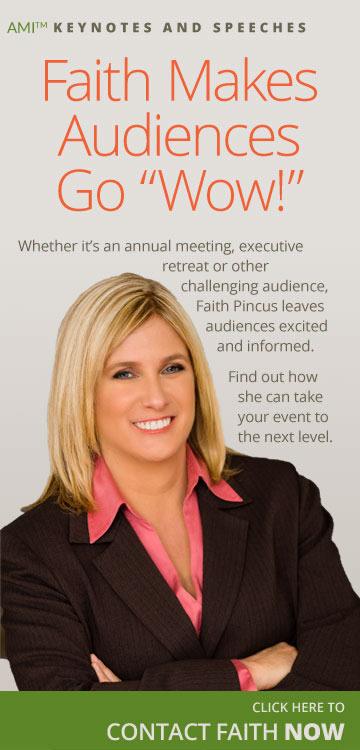Getting second-person perspectives to build a first-class speech
When you’re gathering material for a your presentation, don’t overlook the potential of quotes, interviews and articles to help support and advance your points. It adds credibility if done well, and can also reinforce your message with a touch of humor, humanity or that all-important gravitas. You are, in effect, taking some of the pressure off to “sell” your audience on a certain point of view by tacitly bringing in an outside opinion — a second-person perspective.
And you can quote me
Quotes are like stories. They communicate ideas, concepts, morals, lessons … Best of all, you don’t even have to think them up yourself. Just go to a great quote website (or even, gasp, an old quote book) and look under your topic/key words to find something that will help you communicate your point. Word to the wise: Do a little bit of homework if you’re taking a quote from the internet, on the source, the quote, the context. Do a little quick checking of the source, if you don’t know him or her.
Make sure to keep your quote simple and relevant to your point. If it’s a great word of wisdom but would be over the heads of your audience, consider paraphrasing to get the esence of it without throwing everyone for a loop.
Personally, I use quotes in my introductions and my conclusions more than in the body of my presentation, but they can also be useful to help communicate any one of my points. Another advantage of quotes is that it lends your presentation an air of authenticity. After all, if Thomas Jefferson agrees with you, who is your audience to argue?
The genuine article
For the purposes of a speech, taking material from a print, audio or video product is a lot the same as a quote. After all, you can hardly present the entire magazine article or documentary. Lifting a specific part can be a good way to relate a lot of information in a power-packed, abbreviated form, especially if you have reason to believe that your audience is familiar with (and has good associations with) the original context.
You can, when necessary, use opinion-type article sources as long as you are careful that your source matches your audience’s belief system to a certain degree. For example, you don’t want to be quoting a blog written by Rush Limbaugh to a meeting of the Young Democrats and you don’t want to quote Rachel Maddow to members of the Tea Party (unless you are making an intentional comparison or joke, that is).
Besides that, when you’re using articles, remember to:
• Use a credible source – one that has authority on the subject both to people generally and to your audience specifically.
• If possible, use a source that is known by your audience, at least in name or concept.
• As with quotes, stick to what is understandable – i.e. keep it simple.
• Keep it short and to the point.
• Cite the article properly. Don’t reference the wrong author or publication.
For a fresh view, get an interview
Interviewing people is an excellent way to get specific, tailored quotes to support your points. Because of the extra effort and the element of uncertainty about results, speakers don’t always think of getting an interview to give them material, but that’s why it offers some fresh possibilities and can liven up a dry part of your presentation. Be sure that you take the time to do this in advance so you have plenty of opportunity to transcribe the interview and review your notes in order to pick out the right quotes and information to use. Also, in some circumstances you should get permission from the person interviewed to use quotes from their interviews.
 Did you enjoy this article?
Did you enjoy this article?



